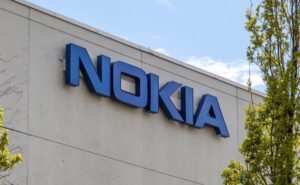PARTNER INTERVIEW: Cao Ming, the Vice President of Huawei’s Wireless Network Product Line (pictured), explains why LTE infrastructure remains the underlying pillar for optimising voice and data services and enabling operators to protect their investments as they launch 5G networks.
Mobile World Live: As operators move to deploy advanced 5G services, why is existing LTE infrastructure so important as a foundation for future business development?
Cao Ming: 5G is taking off as operators around the world have put a huge focus on the next-generation mobile technology. We have observed certain patterns based on the development of previous generations of mobile technology. We know deployment takes time and users need to be encouraged to adopt a new technology.
China, as one of the pioneer countries launching 5G at an early stage, has already deployed more than 700,000 5G base stations, with subscribers reaching more than 200 million. Meanwhile, the number of 4G sites totals 5.75 million and LTE users about 1.3 billion, which is why even if we’re now in the middle of the 5G era, 4G networks will continue to be vital for operators in most countries.
For markets that have deployed 5G, they have the experience of running LTE networks for more than ten years, so the coverage is very robust, providing the underlying foundation to ensure a good user experience.
In 5G pioneering countries not only is 5G connectivity used to deliver services to subscribers, LTE also plays a key role. If we can tap into that and combine with the latest 5G technologies, then an operator is able to provide a better user experience than when using only a 5G network.
For countries yet to roll out 5G, LTE coverage will be even more important, as it’s the very foundation for mobile broadband connectivity. It’s fair to say that no matter if a market has rolled out 5G or not, LTE infrastructure remains the key underlying pillar.
What are the key benefits of using a combination of LTE and 5G technologies, and what is required for a continuous evolution?
If we can adopt a collaborative approach to constructing LTE and 5G networks, there are two key benefits: protecting operators’ investments; and optimising the user experience.
Globally, most operators are rolling out the non-standalone (NSA) 5G architecture, which means the user experience is determined by both 4G and 5G networks. Only by combining the two can an operator optimise the data service experience.
For example, last year based on mobile experience benchmarking results we could see most of the top-ranking operators around the world adopted a collaborative approach for LTE and 5G networks. These include LG Uplus in South Korea, T-Mobile in the Netherlands and Sunrise in Switzerland.
For voice service, VoLTE can enable 5G call access in 2 seconds, and it will be the foundation in both NSA and standalone 5G phases, especially before voice over New Radio (NR) is completely mature.
This approach also allows operators to reuse existing assets as much as possible, as much of the hardware and software in existing LTE networks can support the smooth evolution to 5G and NR can be enabled based on demand.
How is the evolution different in emerging markets without a strong LTE foundation?
As I noted previously, it takes time for network construction, consumer uptake as well as handset prices to come down and penetration to rise. These are the barriers we need to think about in emerging markets, which generally are very cost sensitive. High handset prices and service plans will be barriers to user adoption.
In our opinion, in emerging markets LTE is essential for the evolution to 5G. Existing 2G and 3G networks are burdened by low efficiency of the spectrum and high operating costs as operators face soaring data traffic. An increasing number of operators around the world are planning to phase out these networks.
Since 2G and 3G technologies are lagging behind, that’s why we need LTE. Over time, as handset price become more affordable, operators can provision 5G services based on their LTE networks step by step. We believe deploying LTE networks will be the most cost-effective way for operators in emerging markets.
In addition, building a robust mobile broadband network can be a key economic driver for a country. That’s why we encourage the industry to work together to facilitate the development and construction of LTE networks in emerging markets. That’s how we can close the digital divide and connect the unconnected.
Why are operators accelerating the migration of 2G and 3G networks to 4G and 5G technologies?
If operators don’t move to shut down their 2G and 3G networks as they deploy new ones, they will have to cope with four generations of radio access networks (RATs). Managing four radio access technologies will lead to not only high opex but also difficulties in deploying new technologies, such as limited antenna space in base stations for upgrades.
The first step in accelerating the migration is to ensure the coverage of new RAT by deploying a wide-coverage LTE network, which is better than 2G and 3G and gives operators the confidence to phase out the old networks.
For example, China Telecom previously announced plans to phase out its 2G and 3G networks. To support that, over the last several years it had deployed more than 400,000 LTE sites on the 800MHz band.
The second point is only terminal readiness can encourage the migration to a new mobile technology. For markets seeking to phase out 2G and 3G networks, it is advisable for them to introduce the later generation of handsets, with government policy able to support the uptake of new devices. But some markets have imposed high import tariffs on electronics goods, making user equipment unaffordable for the mass market.
In addition to consumer services, operators also need to consider IoT connections because many of the machine-to-machine connections currently run on 2G and 3G networks, so these will need to migrate to new NB-IoT networks.
How does Huawei’s product portfolio enable operators to fully utilise their 4G assets as they upgrade to non-standalone 5G, protecting their existing network investments?
Looking at the future target network in terms of the RAT, we think most operators will have 4G and 5G together, while some might also have 2G and 3G in their networks. There are two types of products from Huawei that can support the construction of target networks. One is ultra-wideband and the other is multi-channel.
Traditionally, telecoms equipment has one box supporting only one band. Imagine if an operator has five bands or seven bands in the network, then they have to deploy multiple pieces of equipment in a site, which makes it difficult for network deployment and raises opex. We have been integrating our solutions, with one piece of equipment now able to support the 700MHz, 800MHz and 900MHz bands, which means one box can replace three used previously. The same is true for the mid-band, with the 1.8GHz, 2.1GHz and 2.6GHz bands supported by a single box.
This shows the value of our wideband solution. Many operators’ site rental is calculated based on the number of modules deployed on a site. If we can reduce the number of boxes needed, then the rent will be lower and the antenna space required smaller. This also helps reduce their power bills as well as opex.
Our multi-channel solution uses Massive MIMO in urban hotspots, the 8T8R solution in urban areas and the 4T4R solution for universal coverage. The capacity of our Massive MIMO offering is three to five times higher than the traditional 2T2R solution. This basically increases the capacity and helps operators to increase their existing spectrum efficiency, which are among their most valuable assets.
With much of the focus on mobile 5G, how can operators generate revenue from developing an FWA offering?
FWA will be a very important direction for the mobile industry in areas with low home broadband penetration. In Africa, for example, only 2 per cent of households can access home broadband. When we talk about connecting the unconnected, it is not just individuals that we aim to connect. We also aspire to connect all homes, especially during the Covid-19 (coronavirus) pandemic, with people required to stay home to work, to study and to have fun.
We believe the development of FWA will accelerate because home broadband has now become an inelastic demand for users. The second reason is because of the larger capacity of networks enabled by 5G, operators are looking to make full use of that to create more value and more revenue.
FWA is taking off in markets around the world, with 429 operators offering FWA service, while the number connections last year exceeded 100 million.
Huawei has been dedicated to growing the ecosystem and developing the technologies of 5G/4G FWA. For example, the cost of the CPE for home users has been reduced to $20. We hope that with our innovative solutions and cost-effective devices, we can serve more home users and connect the unconnected.
Subscribe to our daily newsletter Back
Source of Article



